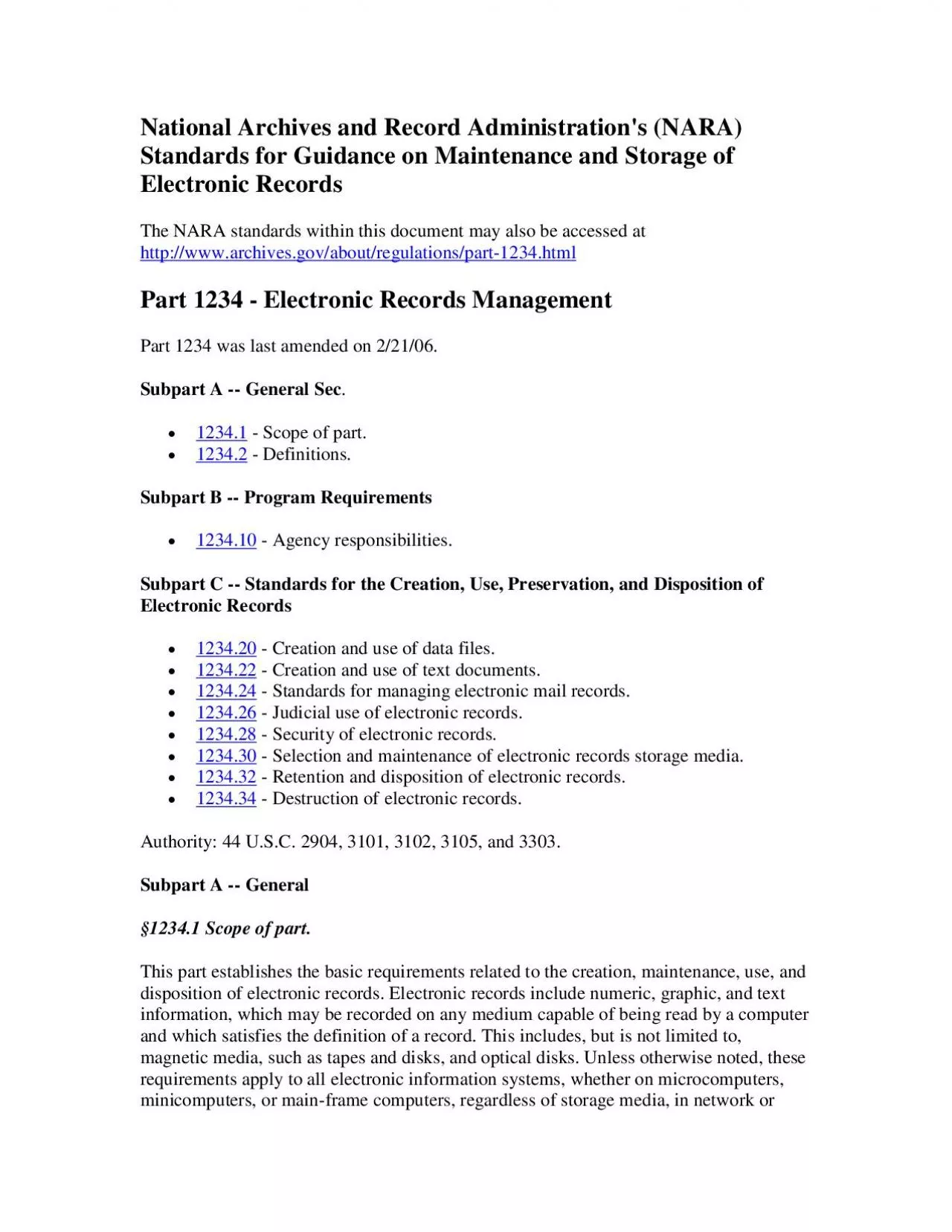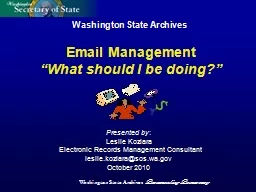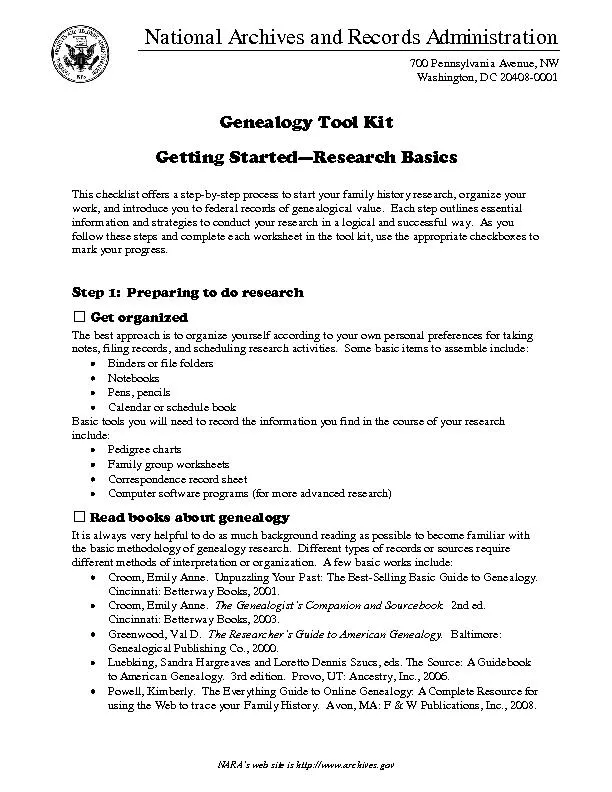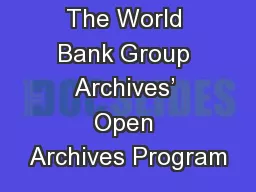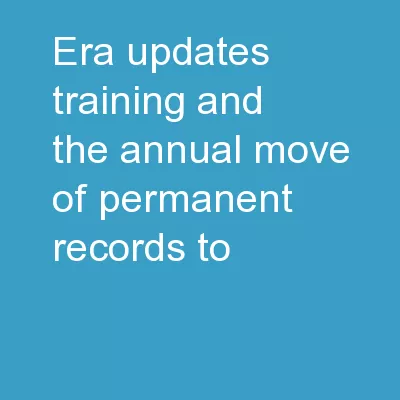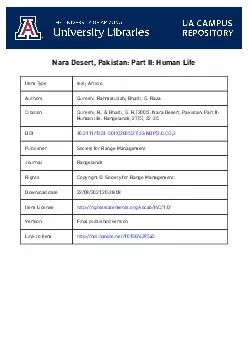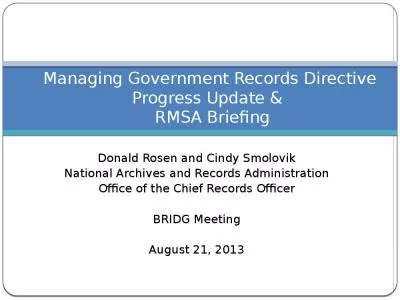PDF-National Archives and Record Administration's (NARA) Standards for Gui
Author : hadly | Published Date : 2020-11-23
httpwwwarchivesgovaboutregulationspart1234html 12341 Scope of part 12342 123410 Agency responsibilities Subpart C Standards for the Creation Use Preservation and
Presentation Embed Code
Download Presentation
Download Presentation The PPT/PDF document "National Archives and Record Administrat..." is the property of its rightful owner. Permission is granted to download and print the materials on this website for personal, non-commercial use only, and to display it on your personal computer provided you do not modify the materials and that you retain all copyright notices contained in the materials. By downloading content from our website, you accept the terms of this agreement.
National Archives and Record Administration's (NARA) Standards for Gui: Transcript
Download Rules Of Document
"National Archives and Record Administration's (NARA) Standards for Gui"The content belongs to its owner. You may download and print it for personal use, without modification, and keep all copyright notices. By downloading, you agree to these terms.
Related Documents

